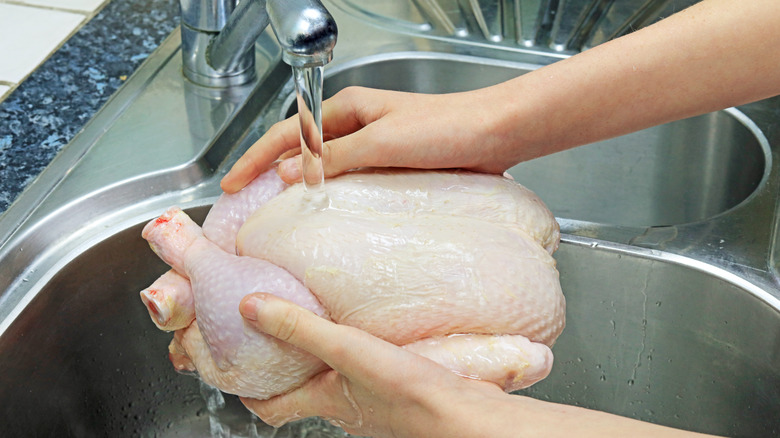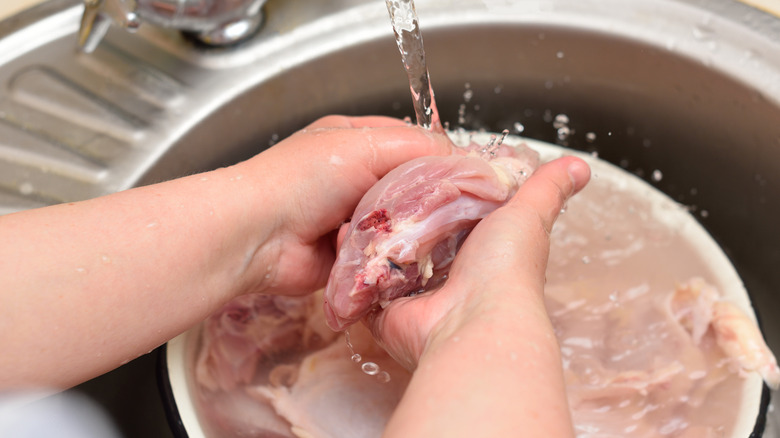New Study Reveals The Safest Way To Wash Raw Chicken
Despite both the USDA and CDC cautioning against it, many still insist on washing raw chicken before cooking. An easy way to spread harmful bacteria like salmonella to other foods, utensils, and kitchen surfaces, a study carried out by researchers at Drexel University found 90% of people who wash their chicken do so either out of habit or because they find raw poultry unappetizing and they are attempting to wash off the offending slime.
Fortunately for those who plan to continue rinsing off poultry regardless of such warnings, a new study has shown there are some helpful best practices that can make washing raw chicken far safer. According to the Physics of Fluids, these practices include adjusting the distance between the faucet and chicken and regulating the intensity of the flow of water to prevent splash-inducing indentations in the chicken from forming. Both practices have been tested to reduce the potential splash, and thus reduce the potential risk for cross-contamination.
Why faucet height and water intensity are important
The study, titled "Chickensplash! Exploring the health concerns of washing raw chicken," identifies a number of factors in the dangerous spread of bacteria during the washing process, including faucet height and water pressure ... particularly during the initial moments when the faucet is first turned on (via Science News). But as the American Council on Science and Health notes, it's the distance between the faucet and the raw chicken being washed, more than any other single factor, that determines the degree of splash, and thus poses the greatest potential for spreading harmful bacteria.
Two other factors the study explains consumers should be aware of are the intensity of water flow and the surface texture of the chicken being washed, as indentations like dimples or divots in the meat increase the likelihood of splashing.
As a result of these findings, it's suggested that anyone dead-set on washing raw chicken hold it close to the faucet and turn the water on slowly to prevent a strong impact. Be sure to also follow the USDA's guidelines for properly sanitizing your sink and any surrounding surfaces after washing raw poultry.

